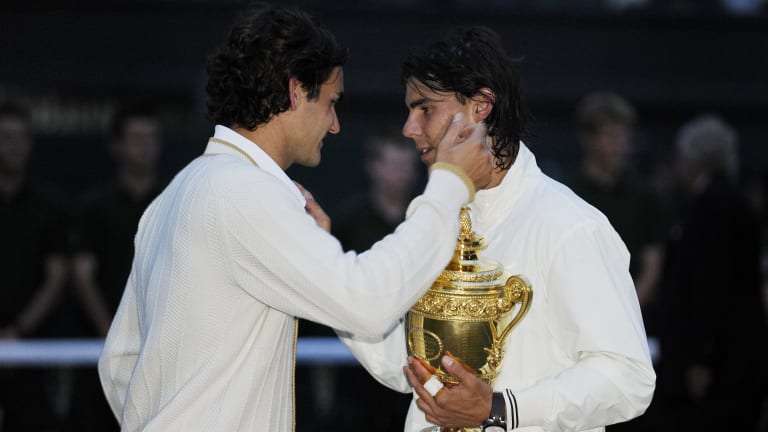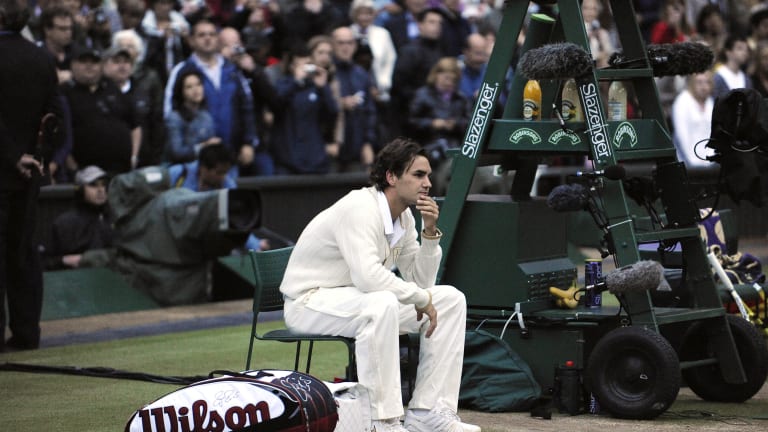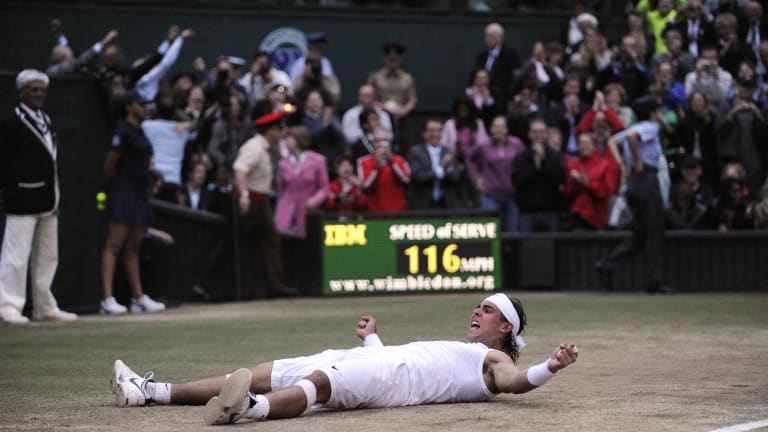GOAT Race
No. 2: Federer’s four-hour comeback comes up one break point short in 2008 Wimbledon final
By Jun 24, 2023GOAT Race
No. 3: Djokovic “closes his eyes” and hits two huge, match-saving forehands against Federer at 2010 US Open
By Jun 25, 2023GOAT Race
GOAT Race: 10 moments when the Big 3's Grand Slam chase hung in the balance
By Jun 23, 2023Facts & Stats
Ranking Reaction: Carlos Alcaraz returns to No. 1 after winning fifth ATP title of year at Queen’s Club
By Jun 26, 2023American teen Ashlyn Krueger goes on the attack to earn 1st WTA title at Veneto Open
By Jun 25, 2023Samsonova, Errani advance at Bad Homburg Open
By Jun 25, 2023ATP London, Great Britain
Carlos Alcaraz rose to the challenge at Queen's Club, but can he fend off Novak Djokovic at Wimbledon?
By Jun 25, 2023Terra Wortmann Open
Alexander Bublik stuns Andrey Rublev to win Halle Open
By Jun 25, 2023bett1open
Petra Kvitova proves Wimbledon preparedness with Berlin victory
By Jun 25, 2023WTA Birmingham, Great Britain
Jelena Ostapenko beats Barbora Krejcikova for second grass title in Birmingham
By Jun 25, 2023GOAT Race
No. 2: Federer’s four-hour comeback comes up one break point short in 2008 Wimbledon final
GOAT Race—our 10-part countdown of the moments when the Big 3's Grand Slam chase hung in the balance—continues.
Published Jun 24, 2023
Advertising
Advertising

The 2008 Wimbledon final is considered by many to be the greatest match in tennis history.
© Tom Jenkins
Advertising

Unable to break late in the fifth, the 2008 Wimbledon final left Federer disappointed.
© Tom Jenkins
Advertising

The 2008 final lasted four hours, 48 minutes.
© Tom Jenkins